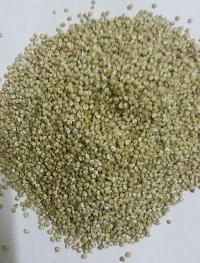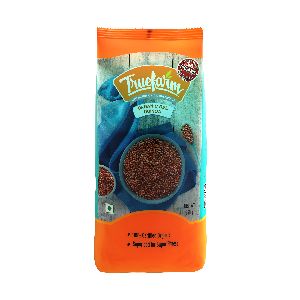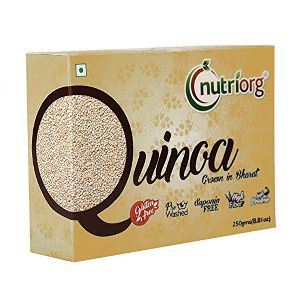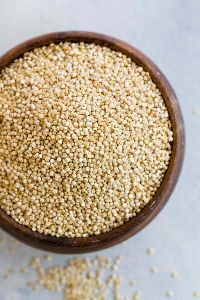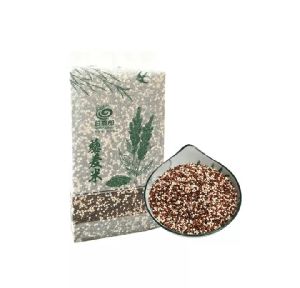Listing ID #1491673
Company Information
Ask for more detail from the seller
Contact Supplierorganic quinoa pronounced “kee-wa”. Quinoa is a complete protein grain 50% more than wheat. Quinoa originated in the andean region of south america, where it has been an important food for 6,000 years. To these indian natives called “incas” of the andes mountains in peru and bolivia, quinoa seeds have been more valuable than gold. The incas, who held the crop to be sacred, referred to quinoa as “chisaya mama” or “mother of all grains”. And it was the inca emperor who would traditionally sow the first seeds of the seans using ‘golden implements’. Expands to four times its volume when cooked. Makes a very light breakfast cereal. Quinoa is high in protein and complex carbohydrates low in fat and richer in vitamins and richer in vitamins and minerals than other grains. Called a supergrain, quinoa is highly nutritious and can supply us with all of the body’s requirements: carbohydrates, fats, protein, vitamins, minerals, and fiber. Quinoa is gluten free. Quinoa is high in minerals and b vitamins, especially vitamin b6.
a spoonful of quinoa.
quinoa has a light, fluffy texture when cooked, and its mild, slightly nutty flavor makes it an alternative to white rice or couscous.
most boxed/pre-packaged quinoa has already been pre-rinsed for convenience, and cooking instructions therefore suggest only a brief rinse before cooking, if at all. If quinoa has not been pre-rinsed, the first step is to remove the saponins, a process that requires either soaking the grain in water for a few hours, then changing the water and resoaking, or rinsing the quinoa in ample running water for several minutes in either a fine strainer or a cheesecloth. Removal of the saponin helps with digestion; the soapy nature of the compound makes it act as a laxative.
one cooking method is to treat quinoa much like rice, bringing two cups (or less) of water to a boil with one cup of grain, covering at a low simmer and cooking for 10 - 15 minutes or until the germ separates from the seed. The cooked germ looks like a tiny curl and should have a slight bite to it (like al dente pasta). As an alternative, one can use a rice cooker to prepare quinoa, treating it just like white rice (for both cooking cycle and water amounts).
vegetables and seasonings can also be added to make a wide range of dishes. Chicken or vegetable stock can be substituted for water during cooking, adding flavor. It is also suited to vegetable pilafs, complementing bitter greens like kale.
quinoa can serve as a high-protein breakfast food mixed with honey, almonds, or berries; it is also sold as a dry product, much like corn flakes. Quinoa flour can be used in wheat-based and gluten-free baking.
quinoa may be germinated in its raw form to boost its nutritional value. Germination activates its natural enzymes and multiplies its vitamin content.in fact, quinoa has a notably short germination period: only 2–4 hours resting in a glass of clean water is enough to make it sprout and release gases, as opposed to, e.g., 12 hours with wheat.[citation needed] this process, besides its nutritional enhancements, softens the grains, making them suitable to be added to salads and other cold foods.
health benefits of quinoa
blood sugar the glycemic index is a ranking system that assigns a number to foods that contain carbohydrates, depending on how quickly they release glucose into the bloodstream. Foods with a high rank are usually not suitable for diabetes sufferers because they cause spikes in blood sugar. Low-gi ranking foods don't adversely affect blood glucose levels; they support weight loss and reduce the risk of heart disease, according to the glycemic index website. Quinoa is a low-ranking food on the glycemic index.
memory quinoa is a rich source of b vitamins, including folate. Folate is necessary for making new cells. Its synthetic form, folic acid, is often taken by pregnant women. Folate is also important for brain function. According to the nutrition for optimal wellness website, elderly people with low levels of folate are more likely to suffer from memory loss, dementia, or be depressed.
digestion (quinoa is a gluten-free, grain-replacement food that's well tolerated by celiac sufferers) quinoa is easily digested, particularly when compared to other grains. Many grain foods such as wheat, rye and barley cannot be tolerated by some people and are therefore diagnosed as suffering with celiac disease. Symptoms of celiac disease include abdominal bloating, chronic diarrhea and iron-deficiency anemia. Quinoa is a gluten-free, grain-replacement food that's well tolerated by celiac sufferers.
cardiovascular quinoa is a rich source of the mineral magnesium. Magnesium supports healthy blood vessels by relaxing them and improving their elasticity. Thus, quinoa can help reduce the risk of heart disease and other disorders, such as migraines, that are associated with restricted blood vessels.
preparing quinoa botanically, quinoa is not a true grain. It's a seed related to beets, chard and spinach. However, it's typically cooked like a grain, and the incas who ate quinoa as a staple food referred to it as the "mother grain." quinoa is straightforward to prepare; it should be thoroughly rinsed, then cooked as rice. Furthermore, it can be used in combination with other grains, such as in bread baking. Quinoa can also be added to salads and soups, according to body ecology.
five more reasons to try quinoa
1. Quinoa promotes healthy bone growth: quinoa contains all nine essential amino acids used by the body as building blocks for the development of muscle tissue and necessary metabolic enzymes. Protein is also necessary for the absorption of calcium into the bones and the development of collagen, as well as for the growth factors involved in healthy growth of the bone matrix.
2. Quinoa can help reduce cholesterol: in a 2010 study conducted in the netherlands, rats bred to have high cholesterol were fed quinoa. These rats were also fed a high fructose diet that should further increase their harmful cholesterol (ldl) levels. After quinoa was introduced to the diet, the detrimental effects of the cholesterol and fructose began to reverse and cholesterol levels were returning to normal.
3. Quinoa is high in riboflavin: riboflavin is a member of the b-vitamin family, which has been shown in recent studies to aid in the elimination and prevention of migraine headaches by improving the transport of oxygen into the cell. This prevents migraines from occurring and aids in their relief.
4. Quinoa's high magnesium content promotes cardiovascular health: magnesium has been the subject of many studies for its role in preventing hypertension through its ability to relax the small muscles that clamp down on our blood vessels. Recent research has also shown that a deficiency in magnesium actually increases the hormone (angiotensin ii) that is responsible for increasing blood pressure, so magnesium has a two-fold effect on our heart health.
5. Quinoa can help prevent gallstones: quinoa is high in insoluble dietary fibre, which has been shown to lessen the occurrence of gallstones by reducing the stagnation of bile and lowering the total blood triglycerides, which are two of the major components to gall stone formation. Quinoa is a great way to get fibre from a gluten-free source.
quinoa for malnutrition
a study by the department of applied nutrition and food chemistry in sweden has demonstrated the effectiveness of quinoa as an infant food for undernourished children.
what are the nutrients in quinoa?
health benefits of eating quinoa


